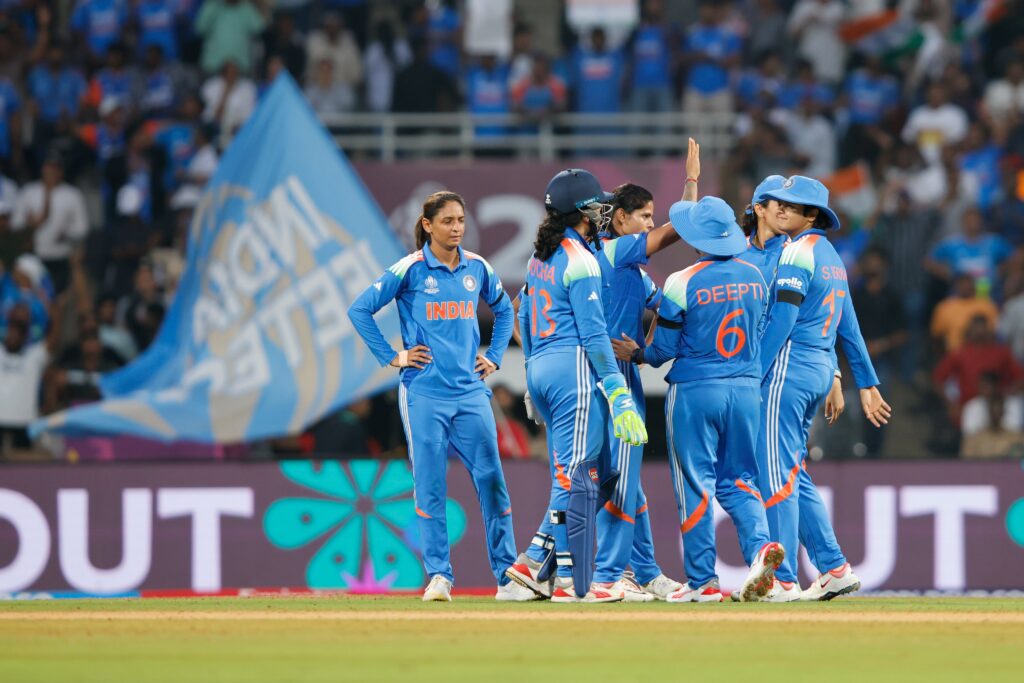
India (PC: BCCI Women)When Star Sports launched its campaign for the ICC Women’s ODI World Cup “Jersey Wahi, Jazba Wahi”, it was more than a slogan. It was a statement of intent. The same jersey that once symbolised the heroics of Kapil, Sachin, Dhoni and Virat now sits proudly on Harmanpreet Kaur, Smriti Mandhana, and Jemimah Rodrigues. The message is clear: the passion, the pride, and the purpose are identical – only the protagonists have changed.
If the semi-final win against Australia was women’s cricket’s coming-of-age, the finals represent its destiny. This could well be the 1983 moment – a tournament that transforms not just the sport, but its place in the nation’s consciousness. Just as Kapil Dev’s Devils changed the trajectory of Indian men’s cricket, a win here can permanently alter the ecosystem around women’s cricket – participation, sponsorship, broadcast economics, and fandom.
The parallels are uncanny. The 1983 team wasn’t the favourite. Neither is this one. But the emotion, the grit, and the groundswell of support – they’re all there. And if 2011 was about completing a circle at home, 2025 could be about expanding it to include millions of young girls who see in this team their own reflection.
For a broadcaster, this final is not merely a match; it’s a cultural inflection point. “Jersey Wahi, Jazba Wahi” provides the perfect creative scaffold to build multiple emotional and thematic routes: The Legacy Route could showcase how the same jersey has carried dreams across generations from the 1983 whites to the 2025 blues with voiceovers by legends, archival footage, and intercuts of Harmanpreet’s power and Jemimah’s flair.
“The story continues. Only the heroes have changed.”
The Equality Route could use symbolic visual language – men and women practising in parallel nets, young girls watching highlights in school playgrounds to suggest that the boundaries between genders are fading, not just on the field but in the nation’s imagination.
“Cricket doesn’t see gender. It sees greatness.”
There could also be a fan route that taps into the fandom wave – the memes, the chants, the reel culture. Imagine a campaign where fans recreate iconic women’s cricket moments Jemimah’s dance, Deepti’s run-out, Harman’s sixes just as men’s cricket fandom once re-enacted Dhoni’s helicopter shot. “New heroes. Same heartbeat.”
To truly convert this into a long-term growth engine, the momentum must extend beyond the final. What could be some immediate term milestones? Every district association should pledge a “One Ground, One Girl Team” initiative with local tournaments televised regionally on digital platforms. We need to promote campus leagues backed by the BCCI and sports regional channels to deepen access. Encourage mainstream FMCG, fitness, and fashion brands to sign women cricketers as ambassadors, not just token endorsers. Build docu-series and talk shows around women athletes telling stories of their families, struggles, and triumphs, blending drama and data. Drive fan engagement with merchandise and stadium activation tie-ins dedicated to the women’s game …closing the loop between visibility and monetisation.
For too long, the women’s game has been framed as an offshoot of the men’s. Now, it can stand alone, powered by performance, fuelled by passion, and amplified by platforms that understand culture as much as cricket.
For More Exciting Articles: Follow RevSportz





